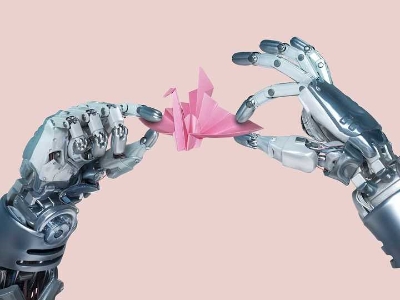
Blogs
Digital economy. What is it?
February 25, 2019


Anuar Buranbayev
partner
It took a long time to figure out what the Digital Economy is. Combing the theory of transaction costs and the possibilities of digital technologies, it turns out that the Digital Economy is a completely new way to reduce transformational and transaction costs.
Transformation costs are the costs that accompany the process of physical change of material, as a result of which we get a product that has a certain value.
Transaction costs are the costs that ensure the transfer of property rights from one hand to another and the protection of these rights. Unlike transformation costs, transaction costs are not related to the value creation process itself.
Let's start with transaction costs. They are divided into the following types:
- costs of searching for information;
- costs of negotiating and concluding contracts;
- the costs of measurement;
- costs of specification and protection of property rights;
- costs of opportunistic behavior.
Transaction costs occur before the exchange process (ex ante), during the exchange process, and after it (ex post). The deepening division of labor and the development of specialization contribute to the growth of transaction costs. Their value also depends on the prevailing form of ownership in society.
Each type can theoretically be drastically reduced by digital technology, which should lead to increased productivity.
In our view, an ideal digital platform should reduce each type of cost, thus reducing the final price for the consumer.
And this is the phenomenon of "Uberization". When the platform reduces all five types of costs.
Similarly, digitalization reduces transformation costs by creating deeply integrated cyber physical systems. Their main difference from previous technologies is that the systems for processing information and data from the supporting ones become one with the main ones. In other words, the physical transformation is defined by input data and creates data flows for subsequent stages in the value chain in real time. This type of work requires synchronous operation of sensors, actuators and other operational units and a real-time control system based on algorithms that are easily digitized, excluding humans.
The digital economy is very demanding in terms of availability, quality, and security of "hard" and "soft" digital infrastructure.
We believe that it is necessary to review the Digital Kazakhstan state program and focus it on areas that are under the control of Central and local executive bodies:
1. Affordable and high-quality digital infrastructure in places where businesses and people are concentrated.
2. Moving from prescriptive to descriptive incentive regulation for businesses to implement digital technologies.
3. Prescriptive implementation of digital technologies in the process of providing public services in order to reduce transformational costs and reduce transaction costs generated by the state for the population and business.
4. Prescriptive digitalization of quasi-public sector business models
In simple words:
1. Transfer the decision to provide public services to artificial intelligence platforms. To put it quite simply, exclude the representative of the state at the decision-making stage, giving it to the AI. This should primarily concern the processes in which public funds are distributed: subsidies, tax breaks, measures of direct support to the population and businesses, and so on.
2. Stop forcing businesses to digitalize. Instead, to focus on the quasi-public sector to show an example of efficiency. With a high probability, most of the quasi-public sector enterprises can be replaced by algorithms, since they have a normative operating model.
Those quasi that operate in the market, should show an example of efficiency from the introduction of digit in their business model.
Let's consider a special case of providing a support measure to an enterprise. All required information must be uploaded online via the user-friendly interface, without contact with the representatives of the state. The decision to approve or reject is based on algorithms, so the AI can be accepted. During the decision-making process, an AI connected to all state databases, social networks, and the global network will be able to collect and analyze information about the recipient of support better and more objectively than any analyst of a state organization. This requires setting clear selection criteria and evaluation algorithms. Without any rule containing a double interpretation or leaving the interpretation to the discretion of the decision-maker.
Ideally, both parts of fiscal policy - tax collection and subsidies (any type of government support) - should go to platforms, and AI should make decisions.
all publications











